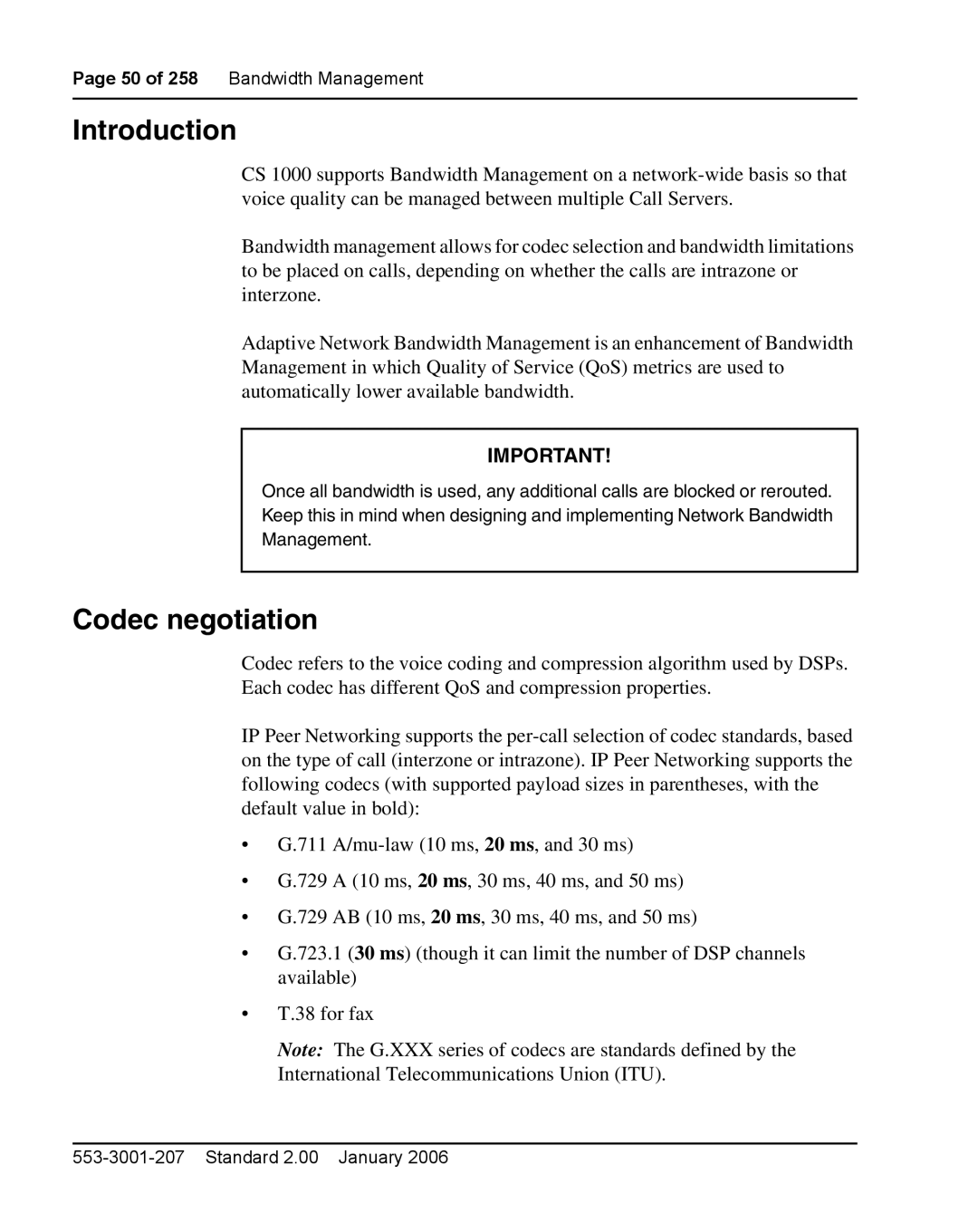
Page 50 of 258 Bandwidth Management
Introduction
CS 1000 supports Bandwidth Management on a
Bandwidth management allows for codec selection and bandwidth limitations to be placed on calls, depending on whether the calls are intrazone or interzone.
Adaptive Network Bandwidth Management is an enhancement of Bandwidth Management in which Quality of Service (QoS) metrics are used to automatically lower available bandwidth.
IMPORTANT!
Once all bandwidth is used, any additional calls are blocked or rerouted.
Keep this in mind when designing and implementing Network Bandwidth
Management.
Codec negotiation
Codec refers to the voice coding and compression algorithm used by DSPs. Each codec has different QoS and compression properties.
IP Peer Networking supports the
•G.711
•G.729 A (10 ms, 20 ms, 30 ms, 40 ms, and 50 ms)
•G.729 AB (10 ms, 20 ms, 30 ms, 40 ms, and 50 ms)
•G.723.1 (30 ms) (though it can limit the number of DSP channels available)
•T.38 for fax
Note: The G.XXX series of codecs are standards defined by the International Telecommunications Union (ITU).
